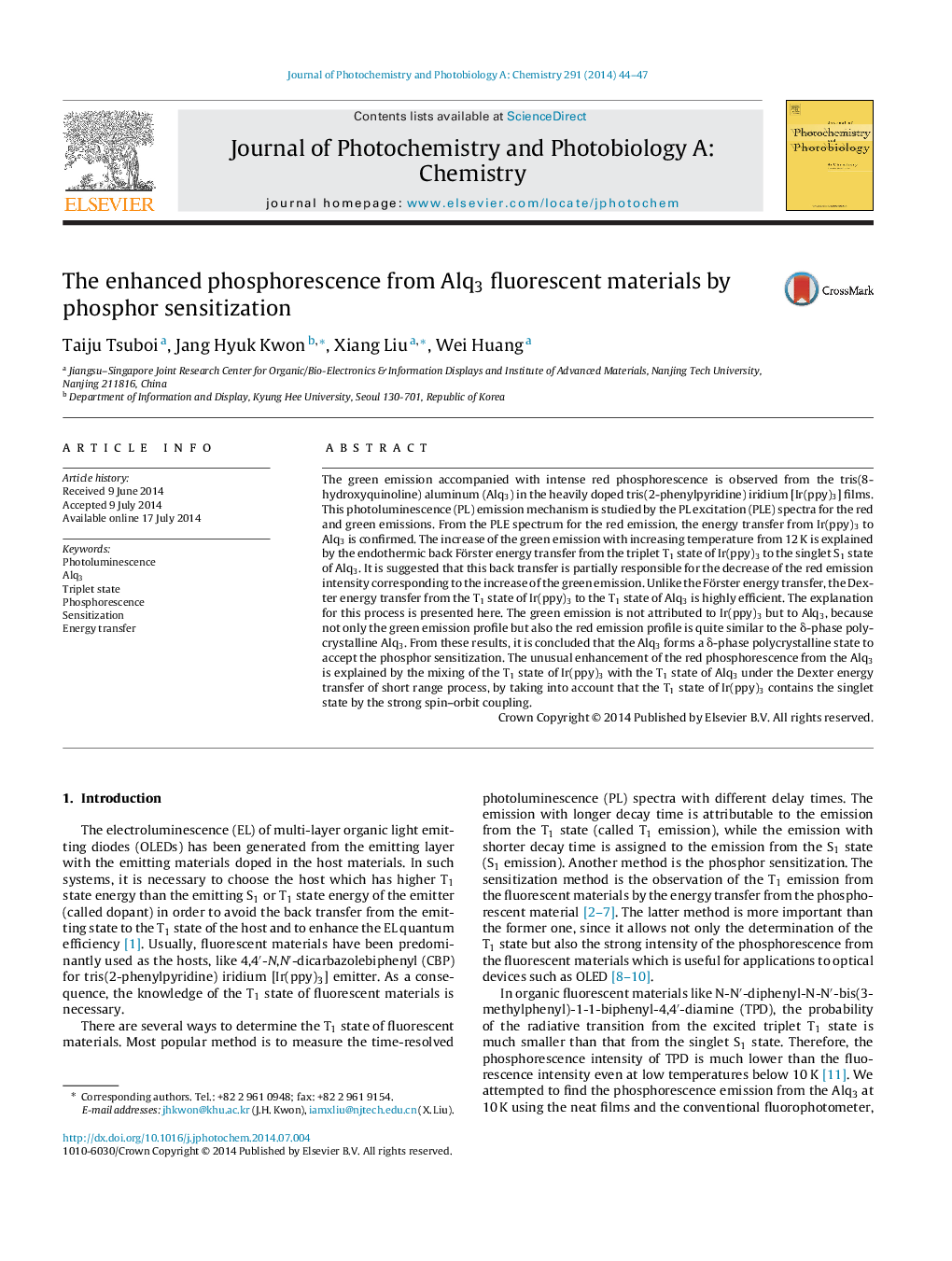| Article ID | Journal | Published Year | Pages | File Type |
|---|---|---|---|---|
| 25897 | Journal of Photochemistry and Photobiology A: Chemistry | 2014 | 4 Pages |
The green emission accompanied with intense red phosphorescence is observed from the tris(8-hydroxyquinoline) aluminum (Alq3) in the heavily doped tris(2-phenylpyridine) iridium [Ir(ppy)3] films. This photoluminescence (PL) emission mechanism is studied by the PL excitation (PLE) spectra for the red and green emissions. From the PLE spectrum for the red emission, the energy transfer from Ir(ppy)3 to Alq3 is confirmed. The increase of the green emission with increasing temperature from 12 K is explained by the endothermic back Förster energy transfer from the triplet T1 state of Ir(ppy)3 to the singlet S1 state of Alq3. It is suggested that this back transfer is partially responsible for the decrease of the red emission intensity corresponding to the increase of the green emission. Unlike the Förster energy transfer, the Dexter energy transfer from the T1 state of Ir(ppy)3 to the T1 state of Alq3 is highly efficient. The explanation for this process is presented here. The green emission is not attributed to Ir(ppy)3 but to Alq3, because not only the green emission profile but also the red emission profile is quite similar to the δ-phase polycrystalline Alq3. From these results, it is concluded that the Alq3 forms a δ-phase polycrystalline state to accept the phosphor sensitization. The unusual enhancement of the red phosphorescence from the Alq3 is explained by the mixing of the T1 state of Ir(ppy)3 with the T1 state of Alq3 under the Dexter energy transfer of short range process, by taking into account that the T1 state of Ir(ppy)3 contains the singlet state by the strong spin–orbit coupling.
